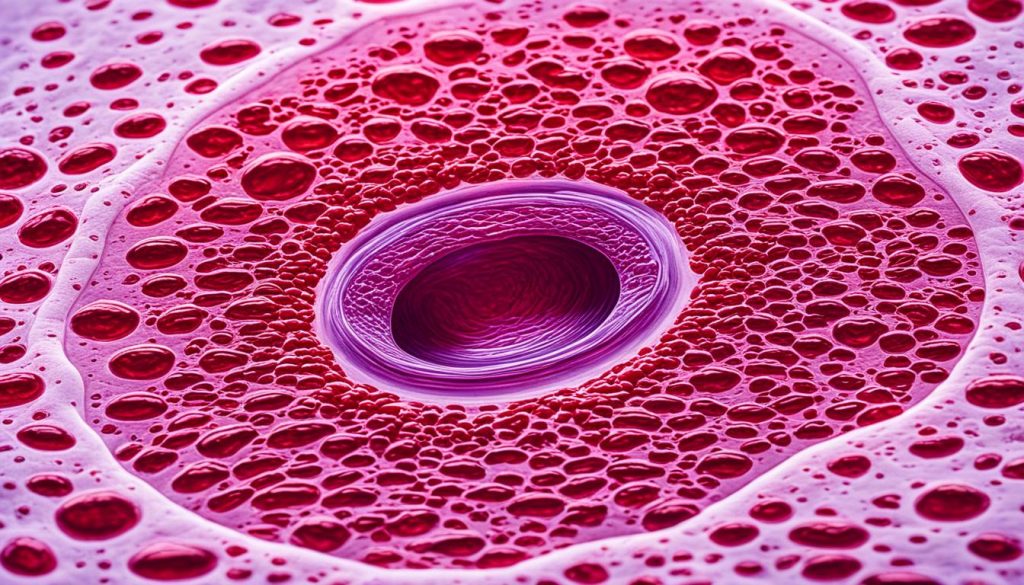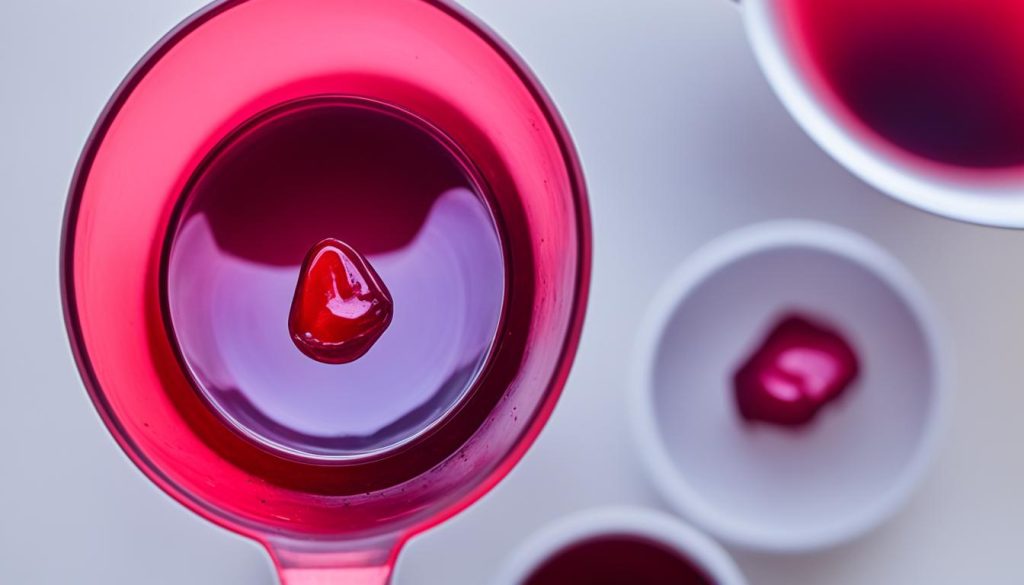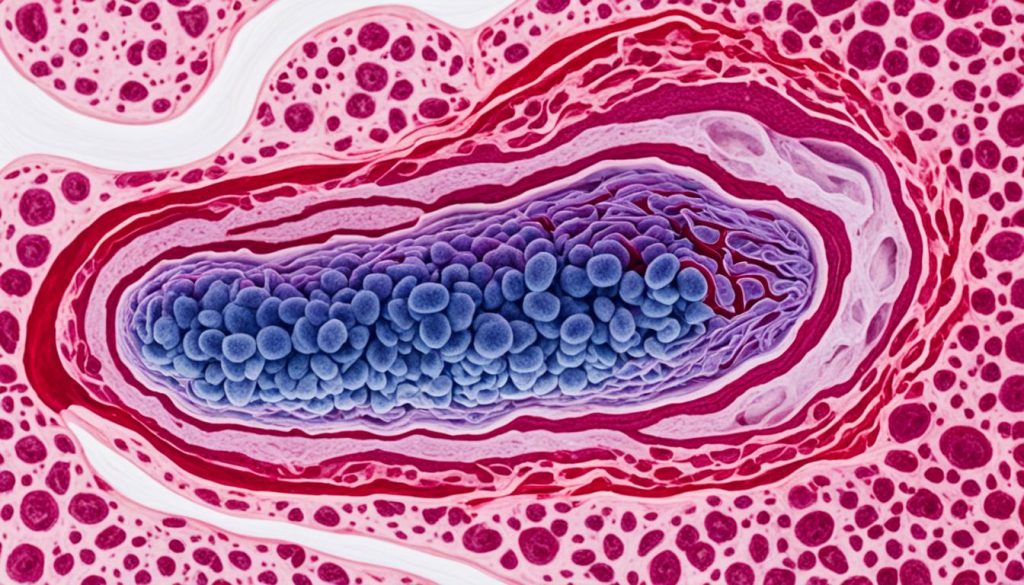Experiencing jelly-like blood clots during your period can be concerning, but rest assured, it is usually completely normal. During menstruation, the lining of the uterus sheds, causing small blood vessels to bleed. The hormones in your body trigger the formation of blood clots, which help prevent excessive blood loss.
Jelly-like Blood Clots During Period Is It Normal
Period blood clots, also known as menstrual blood clots, are a natural part of the menstrual cycle. They are typically small and may appear bright red at the beginning or end of your period. While the texture of these clots may resemble jelly, there is generally no cause for worry.
However, it is important to pay attention to any significant changes in the size or frequency of the clots. If you notice large blood clots or other changes in your menstrual cycle along with these clots, it is recommended to speak to a healthcare provider. They can provide a proper evaluation and address any concerns you may have.
In the following sections, we will explore the causes of menstrual clots, when to seek medical attention, and possible treatment options. Understanding the normal variations and potential signs of abnormality will help you navigate your menstrual health with confidence.
Causes and Formation of Menstrual Clots
Menstrual blood clots are a common occurrence during menstruation, and understanding their causes and formation can help alleviate concerns. These clots are formed when menstrual blood pools in the uterus or vagina before being expelled from the body. The body releases coagulation proteins during menstruation, which trigger the blood to clot.
The texture of menstrual clots is typically jelly-like, and their size and consistency can vary. Clots can range from dime-size to quarter-size, which is considered normal. The color of the clots may appear bright red, dark red, or maroon, depending on the flow of your period.
It’s important to note that the presence of small blood clots during your period is generally not a cause for concern. These clots are a natural part of the menstrual cycle and do not typically indicate any underlying health issues.

When to Be Concerned About Menstrual Clots?
While most menstrual blood clots are normal, it’s essential to be aware of when you should be concerned. Keep an eye out for the following situations that warrant medical attention:
- Passing golf ball-sized clots: If you’re experiencing large clots the size of golf balls during your period, it’s advisable to seek medical attention. This could indicate abnormal period clotting and should be evaluated by a healthcare provider.
- Heavy bleeding: If you find yourself having to change your pad or tampon every hour or soaking through them rapidly, it may indicate a significant amount of bleeding. Seeking medical attention is recommended in such cases to rule out any underlying concerns.
- Frequent passage of large clots: If you notice frequent passage of large clots during your menstrual cycle, it’s worth discussing with your healthcare provider. They can determine if further investigation or treatment is necessary.
- Severe pain with clotting: Experiencing severe pain alongside the passage of blood clots during menstruation could be a cause for concern. Consultation with a healthcare provider can help identify the underlying cause and provide appropriate treatment.
- Change in clot size or frequency: If you notice a significant change in the size or frequency of blood clots over time, it’s important to consult with a healthcare provider. They can evaluate your condition and address any potential concerns.
Being attentive to these abnormal clotting concerns can help ensure your menstrual health and overall well-being. If you experience any of these symptoms, don’t hesitate to reach out to a healthcare professional for guidance and support.

Should Period Blood Clots Be Worried About?
| Signs to Watch For | Should You Be Concerned? |
|---|---|
| Passing golf ball-sized clots | Yes |
| Heavy bleeding, changing pad/tampon every hour or soaking through rapidly | Yes |
| Frequent passage of large clots | Yes |
| Severe pain with clotting | Yes |
| Change in clot size or frequency | Yes |
Possible Causes of Abnormal Menstrual Clots
Abnormal menstrual blood clots can be caused by various underlying conditions. Some possible causes include:
- Uterine fibroids: These noncancerous growths in the uterus can cause heavy, prolonged periods and the formation of large blood clots.
- Adenomyosis: This condition occurs when the inner lining of the uterus grows into the muscle wall, leading to heavy bleeding and clots.
- Endometriosis: When the tissue that normally lines the uterus grows outside of it, it can result in heavy periods and clots.
- Polycystic ovary syndrome (PCOS): Hormonal imbalances associated with PCOS can lead to irregular periods, heavy bleeding, and clots.
- Pelvic inflammatory disease (PID): Infections in the reproductive organs can cause abnormal bleeding and clotting during menstruation.
- Birth control methods: Certain contraceptives, such as intrauterine devices (IUDs), can cause changes in menstrual flow and clotting.
- Coagulation disorders: Blood clotting disorders, such as von Willebrand disease or thrombophilia, can contribute to the formation of abnormal menstrual clots.
If you are concerned about the presence of abnormal menstrual clots, it is important to consult with a healthcare provider. They can evaluate your symptoms, perform necessary tests, and recommend appropriate treatment options.

When to See a Doctor?
While experiencing blood clot during period is generally normal, it’s crucial to stay vigilant about any changes in your menstrual cycle and seek medical evaluation when necessary. If you have concerns about the size and amount of clots, along with other symptoms such as pain, prolonged bleeding, or irregular bleeding between periods, it is advisable to schedule an appointment with a healthcare provider.
During your visit, be prepared to provide detailed information about the duration and heaviness of your periods, any changes you have noticed over time, and if there is a possibility of pregnancy. Your healthcare provider may conduct a pelvic exam, blood tests, or imaging tests to further assess your condition and identify any underlying menstrual clotting issues or blood clots in menstrual blood.
Early intervention and proper diagnosis can help address any potential concerns and ensure you receive appropriate treatment and care for your menstrual health.
Treatment Options for Large Clots
If you experience heavy period bleeding accompanied by large blood clots, there are various treatment options available to alleviate your symptoms. It is important to discuss your concerns with a healthcare provider who can provide personalized recommendations based on the severity of your condition.
1. Hormonal Birth Control
Hormonal birth control methods such as birth control pills, patches, or intrauterine devices (IUDs) can help regulate your menstrual cycle and reduce heavy bleeding. These methods work by controlling the hormones that influence your period, leading to lighter flow and smaller clot formation.
2. Nonsteroidal Anti-Inflammatory Drugs (NSAIDs)
NSAIDs like ibuprofen or naproxen can help reduce period pain and decrease heavy bleeding. These medications work by inhibiting the production of prostaglandins, which are responsible for causing inflammation and pain during your period. By reducing inflammation, NSAIDs can also alleviate heavy clotting.
3. Tranexamic Acid
Tranexamic acid is a medication that helps reduce heavy menstrual bleeding by preventing blood clots from breaking down too quickly. It is available as a prescription and can be taken during your period to lessen clot formation and decrease bleeding.
4. Surgical Procedures
In severe cases of heavy period clots that do not respond to other treatments, surgical procedures may be considered. These procedures, such as endometrial ablation or hysterectomy, aim to remove or reduce the lining of the uterus, reducing menstrual flow and clot formation.
5. Lifestyle Changes
Implementing certain lifestyle changes can also help manage heavy period clots. These can include regular exercise, maintaining a healthy weight, managing stress levels, and ensuring a balanced diet. While lifestyle changes may not eliminate heavy clots entirely, they can contribute to overall menstrual health.

It is important to note that treatment options for heavy period clots may vary depending on individual circumstances. Consult with a healthcare provider to determine the most appropriate approach for your specific needs.
Conclusion
In most cases, experiencing jelly-like blood clots during your period is normal. Menstrual blood clots are a natural part of the menstrual cycle and are typically small in size. However, if you notice significant changes in the size or frequency of clots, along with other concerning symptoms, it is recommended to consult with a healthcare provider. They can evaluate your condition and determine if any further investigation or treatment is necessary. Remember that addressing any concerns about your menstrual health is important for overall well-being and quality of life.
FAQ
1. Are jelly-like blood clots during your period normal?
Yes, experiencing jelly-like blood clots during your period is usually normal. They are a natural part of the menstrual cycle.
2. What causes menstrual blood clots?
Menstrual blood clots are formed when menstrual blood pools in the uterus or vagina before leaving the body. The coagulation proteins released by the body during menstruation cause the blood to clot.
3. What is the normal size of period clots?
Menstrual clots can vary in size, but typically range from dime-size to quarter-size.
4. When should I be concerned about menstrual clots?
If you are passing golf ball-sized clots, experiencing heavy bleeding, or have changes in your menstrual cycle along with significant clotting, it is advisable to seek medical attention.
5. What are some possible causes of abnormal menstrual clots?
Some possible causes include hormonal imbalances, uterine fibroids, adenomyosis, endometriosis, and certain medications.




